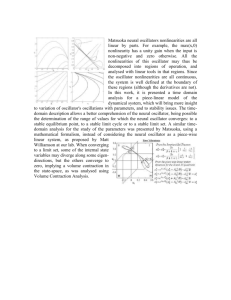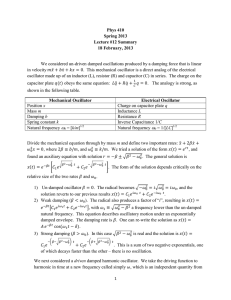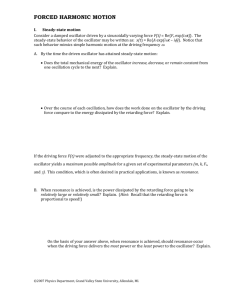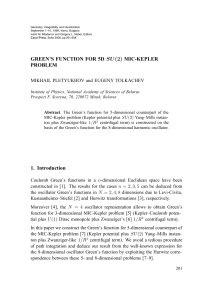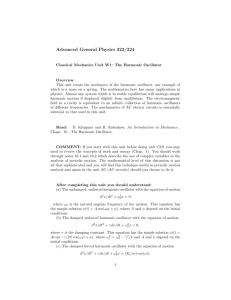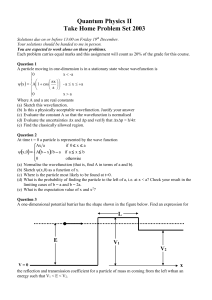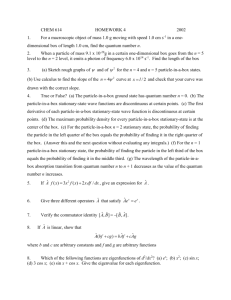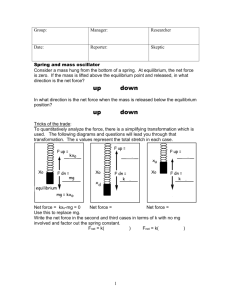Pretest: Damped harmonic motion: Motion graphs Name The x vs. t
advertisement
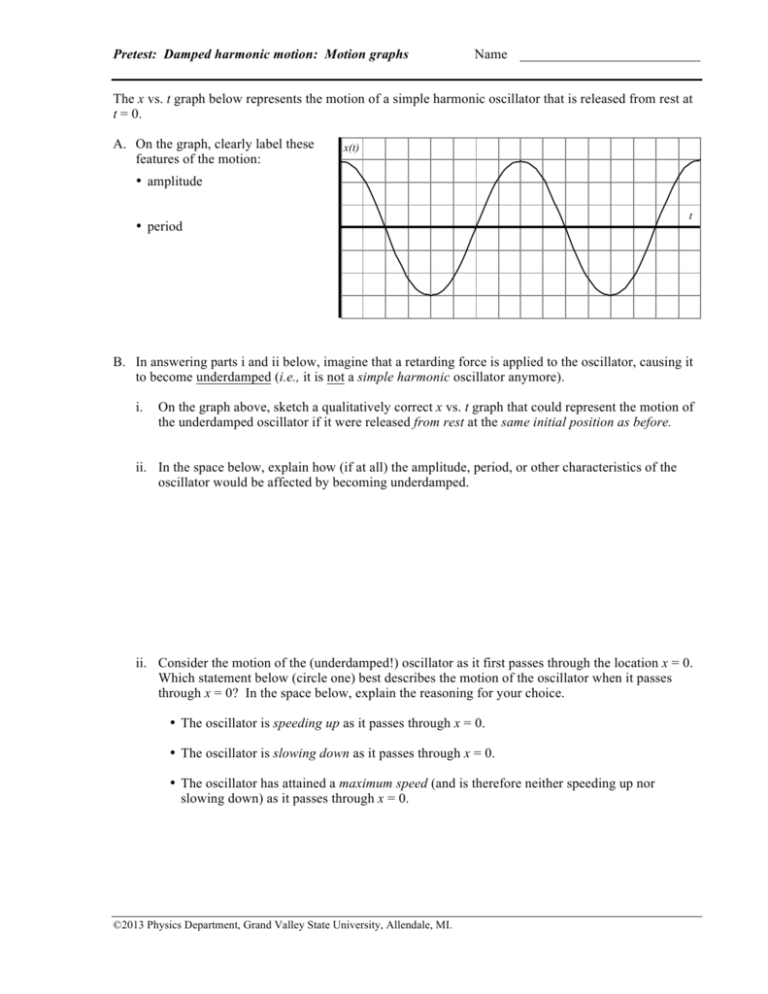
Pretest: Damped harmonic motion: Motion graphs Name The x vs. t graph below represents the motion of a simple harmonic oscillator that is released from rest at t = 0. A. On the graph, clearly label these features of the motion: x(t) • amplitude • period t B. In answering parts i and ii below, imagine that a retarding force is applied to the oscillator, causing it to become underdamped (i.e., it is not a simple harmonic oscillator anymore). i. On the graph above, sketch a qualitatively correct x vs. t graph that could represent the motion of the underdamped oscillator if it were released from rest at the same initial position as before. ii. In the space below, explain how (if at all) the amplitude, period, or other characteristics of the oscillator would be affected by becoming underdamped. ii. Consider the motion of the (underdamped!) oscillator as it first passes through the location x = 0. Which statement below (circle one) best describes the motion of the oscillator when it passes through x = 0? In the space below, explain the reasoning for your choice. • The oscillator is speeding up as it passes through x = 0. • The oscillator is slowing down as it passes through x = 0. • The oscillator has attained a maximum speed (and is therefore neither speeding up nor slowing down) as it passes through x = 0. ©2013 Physics Department, Grand Valley State University, Allendale, MI.


